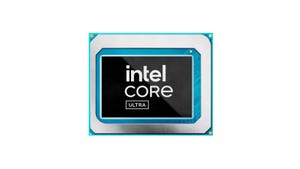Ahead of the event, Omdia analysts share their predictions regarding the key themes and how they are expected to develop over the next year.
October 17, 2022

The telecoms industry is seeing a significant amount of innovation, with new trends and acronyms emerging all the time. 5G standalone, 6G, private networks, Open RAN, RIC, PON, FTTX, the list goes on. This is all happening at a time when the role of the public cloud hypserscalers is taking on greater importance, and the convergence between telecoms and cloud gathers pace. Over the next year, the telecoms industry is going to see more change, driven by a desire to monetise and maximise these trends, and encourage the wider adoption of new applications and services designed for the network edge.
That’s why Informa Tech is hosting a new industry event – Network X. This new event, a successor to 5G World and Broadband World Forum, focuses on the convergence of 5G, fixed networks and the cloud, all of which will be high on the agenda for telecoms in 2023. Ahead of the event, Omdia analysts share their predictions regarding these key themes and how they are expected to develop over the next year…
Telco and hyperscaler convergence momentum continues
In the next five years, telcos will collectively invest $1.9tn in fixed and mobile networks and operations, but they will spend as much as 66.3% of their revenues on operating expenses. To generate efficiencies, operate more cost-effectively and make a return on their investments, operators are exploring opportunities to shift workloads into a hyperscaler cloud (public cloud), rather than managing them in their own private data centres.
According to Omdia’s recent Telecom Cloud Evolution Survey, approximately 4% of telco IT (OSS and BSS) workloads are hosted on the public cloud currently (mainly BSS) and respondents expect this to rise to 23% in 5 years. Furthermore, operators are testing parts of the network, including the 5G standalone (SA) core, in the public cloud to utilise its innate scale and distributed cloud capabilities.
In 2023, we can expect more operators to turn to the public over the expense of running their own data centre, and move workloads into the public cloud. Many will start with BSS/OSS, but we could also see some of the first network elements run in a public cloud on a live network, such as the 5G SA core or disaggregated RAN components, such as the centralised unit.
Furthermore, over the next year we are likely to see the hyperscalers, not only hosting telco workloads but also launching connectivity products and services. This year, AWS launched a private network solution, including both radio hardware and core network capabilities. With the availability of dedicated spectrum in many countries – like CBRS spectrum in the US – we could see more hyperscalers encroaching on traditional telco services.
Dario Talmesio, Research Director, Service Provider Strategies, Regulation, 5G at Omdia
2023 will Stand Alone as the year for “true 5G”
5G has been hyped for years but has yet to significant upgrade on LTE, or lead to the creation of any new killer applications. However, that may change in 2023 as we see ‘true 5G’ emerge with more deployments of Standalone (SA) networks. 5G SA can be hailed as true 5G because it enables many of the advanced performance benefits that 5G was designed for, such as low latency, slicing, and edge computing. These features are likely to help with the development of new 5G-native business and consumer applications.
As of today, there are around 25 operators globally that have launched 5G SA networks commercially. In 2023, that number will grow significantly and will likely more than double by the end of next year.
Roberto Kompany, Principal Analyst, Service Provider Networks, Omdia
PON growth continues to be anything but passive
One gigabit broadband is now the standard and fibre-based access is transforming lives in millions of homes, businesses, factories and schools. Society will be propelled forward even faster as next-generation fibre access technologies become more prevalent opening up more opportunities for education, remote health, remote work, entertainment, manufacturing and commerce.
Using far less power than Active Optical Networks while delivering gigabit and beyond connections, the importance of the Passive ‘P’ in PON cannot be understated. PON technology responds to industry and consumers’ demands for energy efficiency and the PON equipment market is forecast to grow at a CAGR of 12.3% from 2020 to 2027.
In 2023, PON will continue to be the dominant fibre-access technology deployed around the world. This growth provides significant opportunities to existing PON OLT vendors and the unprecedented opportunities for PON equipment vendors will continue. The opportunities extend across all regions as different types of operators build, extend, and upgrade their respective fibre-access networks.
Julie Kunstler, Chief Analyst, Broadband Access at Omdia
Open RAN builds advocacy despite scepticism
Open RAN has been gaining momentum over the past couple of years as operators look for more flexibility and choice in the way they build their radio networks. Recent headlines regarding major open RAN players hitting bumps in the road in this space, have not deterred operators from looking at open RAN with serious intentions.
We can expect open RAN to mature and grow in 2023. However, we can also expect it to be challenged by both its opponents – some of the traditional RAN vendors – and also by some operators who are yet to be convinced of the business case.
Open RAN has the potential to be a significant technology in the medium to long term, so the challenge for its supporters in 2023 is to demonstrate the value in live deployments to build up broader advocacy. It certainly won’t become the dominant model in the 5G era, but it is still an important complementary model and may well go on to become the dominant model for 6G.
Rémy Pascal, Principal Analyst, Mobile Infrastructure at Omdia
Telcos will move up the digital value chain by pursuing network edge
Network edge represents the symbiosis between applications and connectivity. It is one of the most obvious paths of evolution for communication service providers (CSPs) that wish to make the transition from ‘connectivity provider’ to ‘digital technology company’. Pursuing network edge holds significant new revenue opportunities for CSPs by allowing them to leverage their growing cloud-based 5G networks, and carries huge potential by enabling telecoms companies to assert relevance in the larger digital value chain.
Over the coming year, we expect the network edge ecosystem to expand as CSPs and technology companies forge deeper partnerships. This will come in two forms. The first will see CSPs climb up the edge stack, getting closer to applications and taking an active part in orchestration, which is already being seen from Lumen and NTT, with VMware as a key partner. We will also experience CSP edge platforms and public cloud companies working closer together. In 2023 and beyond, interoperability and optionality will therefore become key competitive differentiators for CSPs, as they work to engage customers with complex cloud needs and deployments.
Kerem Arsal, Senior Principal Analyst, Service Provider at Omdia
Network X is the coming together of Informa’s existing shows, 5G World and Broadband World Forum, alongside the addition of a new event Telco Cloud, all of which will sit under one roof in Amsterdam’s RAI between the 18th and 20th of October.
The aim of the show is to focus on the convergence of the mobile, fixed line and cloud industries and set the telecoms agenda for 2023. At a time when trade shows are trying to cover a broad spectrum of consumer tech, networks and the IoT, NetworkX will bring the focus squarely back to the B2B telecoms community. The show will feature speakers and exhibitors including major service providers, equipment vendors and cloud companies, such as Verizon, BT, DT, Microsoft, Nokia and Hyperoptic. They, amongst others, will be sharing views, technology and demos on private networks, 5G standalone, OpenRAN, FTTX (PON) and a host of other key trends and topics shaping the telecoms landscape.
About the Author(s)
You May Also Like







.png?width=300&auto=webp&quality=80&disable=upscale)

.png?width=300&auto=webp&quality=80&disable=upscale)
_1.jpg?width=300&auto=webp&quality=80&disable=upscale)



.png?width=800&auto=webp&quality=80&disable=upscale)